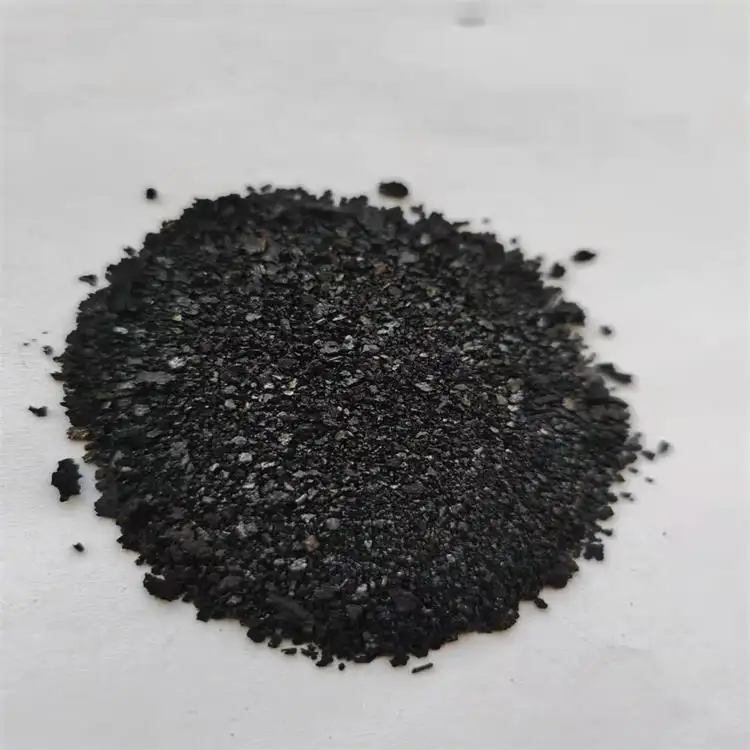famous blue indigo dye
The Rich Legacy of Famous Blue Indigo Dye
Indigo dye, renowned for its deep blue hue, has captivated cultures around the globe for centuries. Derived from the indigo plant, specifically Indigofera tinctoria, this dye has not only been pivotal in the world of textiles but has also played a significant role in economics, art, and even social history. Its unique chemistry and cultural significance make indigo one of the most fascinating subjects in the history of dyes.
Historically, indigo was one of the most sought-after trade goods. The dye was primarily produced in tropical regions of the world, including India, West Africa, and parts of South America. The process of extracting indigo can be labor-intensive and intricate. It involves fermenting the leaves of the indigo plant to convert the indican compound present in the leaves into indigo dye. The dye is then harvested, dried, and processed into a powder to be used in coloring textiles.
Indigo has a long-standing association with various cultures. In India, for example, the dye has been used for thousands of years, creating stunning textiles and garments. The traditional resist dyeing technique, known as bandhani, involves tying the fabric to create patterns before dyeing it with indigo. This practice not only results in beautiful designs but also reflects the deep cultural significance of indigo in Indian society.
The Rich Legacy of Famous Blue Indigo Dye
Another intriguing aspect of indigo dye is its economic significance. Historically, indigo was referred to as blue gold due to its high value in trade. During the 18th century, the indigo trade flourished, particularly in Europe. The dye was immensely popular in the fashion industry, often used to color fabrics for the burgeoning textile markets. In the American South, indigo plantations emerged as a lucrative business, leading to the establishment of an indigo economy, alongside cotton and tobacco.
famous blue indigo dye

However, the success of indigo also came with challenges and ethical concerns. The cultivation of indigo often relied on the exploitation of labor. In colonial settings, enslaved individuals were frequently forced to work on indigo plantations under harsh conditions. The legacy of indigo, therefore, is intertwined with both economic prosperity and social injustices.
In modern times, the revival of natural dyes, including indigo, is gaining traction as consumers become more conscious of sustainability and the environmental impact of synthetic dyes. Artisans and textile manufacturers are once again embracing traditional methods of indigo dyeing, valuing both the ecological benefits and aesthetic appeal of natural indigo. The soft, rich tones that can be achieved with indigo are unparalleled, adding a uniqueness that synthetic dyes often lack.
Moreover, indigo has been celebrated in contemporary art. Artists utilize the dye to explore themes of culture, identity, and heritage. The blue color serves as a symbol of tranquility, depth, and introspection, providing a rich backdrop for artistic expression. Exhibitions featuring indigo-dyed textiles not only highlight the beauty of the dye but also educate audiences about its complex history, the traditional practices involved, and the socio-economic narratives tied to it.
As we move forward, the story of indigo continues to evolve, bridging the gap between ancient practices and modern sustainability narratives. Whether in a vibrant textile or a tranquil painting, the essence of indigo remains as profound as ever, signaling a connection to history, culture, and the endless possibilities of creativity.
In conclusion, the famous blue indigo dye is not just a coloring agent; it is a thread woven through the fabric of human history, connecting diverse cultures and reflecting centuries of artisan knowledge. Its journey from plant to dye to cultural artifact illustrates not only the beauty inherent in nature but also the complexities of our shared global heritage. As interest in natural dyes continues to grow, indigo stands as a testament to resilience, creativity, and the ever-evolving relationship between humanity and the environment.
-
Sulphur Black Dyes in Daily Use
NewsMay.07,2025
-
Indigo Dyeing for Daily Life
NewsMay.07,2025
-
Indigo Dye Production and Its Growing Demand
NewsMay.07,2025
-
Color That Lasts
NewsMay.07,2025
-
Bromo Indigo for Modern Use
NewsMay.07,2025
-
Blue From Nature
NewsMay.07,2025
-
The Timeless Color in Fashion and Textiles
NewsApr.10,2025

Sulphur Black
1.Name: sulphur black; Sulfur Black; Sulphur Black 1;
2.Structure formula:
3.Molecule formula: C6H4N2O5
4.CAS No.: 1326-82-5
5.HS code: 32041911
6.Product specification:Appearance:black phosphorus flakes; black liquid

Bromo Indigo; Vat Bromo-Indigo; C.I.Vat Blue 5
1.Name: Bromo indigo; Vat bromo-indigo; C.I.Vat blue 5;
2.Structure formula:
3.Molecule formula: C16H6Br4N2O2
4.CAS No.: 2475-31-2
5.HS code: 3204151000 6.Major usage and instruction: Be mainly used to dye cotton fabrics.

Indigo Blue Vat Blue
1.Name: indigo blue,vat blue 1,
2.Structure formula:
3.Molecule formula: C16H10N2O2
4.. CAS No.: 482-89-3
5.Molecule weight: 262.62
6.HS code: 3204151000
7.Major usage and instruction: Be mainly used to dye cotton fabrics.

